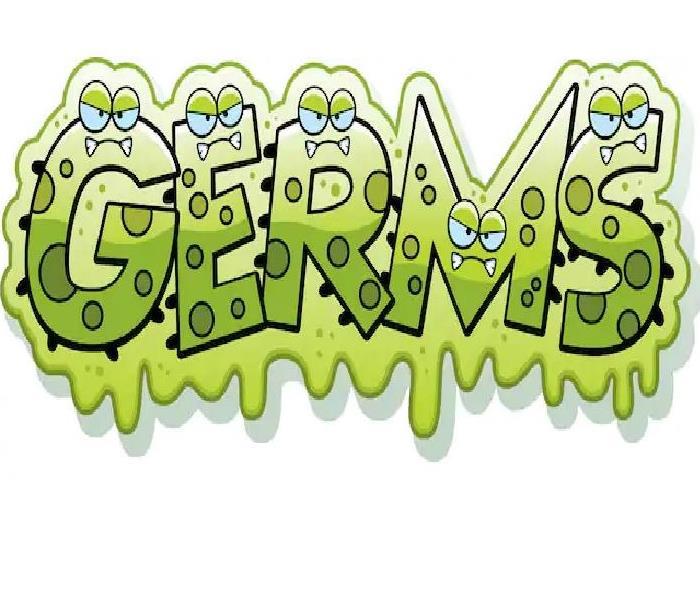How Long Can Germs Live on Surfaces
1/8/2020 (Permalink)
Germs have been rough this year. Reports on the potential dangers of antibiotic-resistant superbugs mingle with discussions of the effectiveness of vaccinations and various other medical interventions. While germs may be too small to be seen with the naked eye, encountering them can have a major impact on your health, and these microscopic menaces can lie in wait on a wide array of common surfaces. How long can germs live on surfaces? And what can you do to protect yourself and your health? When germs are on the prowl, no place is safe. Buses, commuter trains, rental cars, and private vehicles transport both people and virulent germs. Retail establishments, health clubs, educational institutions, restaurants, hotel rooms, and even cruise ship cabins can shelter germs. In fact, practically anything that you touch can expose you to germs, putting your health at risk. According to the National Health Service, the lifespan of a germ varies depending on the type of germ and the surface that it is on. How long can germs live on surfaces? Below we explore a few common examples.COLD GERMS
The common cold is a frequent source of misery. A variety of viruses can trigger it, and like other viruses, cold germs tend to survive for longer periods on hard, nonporous surfaces like desktops and handrails. On suitable indoor surfaces, cold germs can linger for days, but fortunately they rarely remain infectious for more than 24 hours. Cold viruses can also thrive on the skin, but their survival time there is generally measured in mere minutes or hours.
INFLUENZA GERMS
Viruses that cause influenza can survive in the air as droplets for hours and live on hard surfaces like phones and keyboards for up to 24 hours. Infectious flu viruses clinging to a tissue can last for about 15 minutes, but viruses on the hands tend to fade quickly. Most will be only a minimal threat after five minutes. It may be a small window of time, but influenza germs don’t warn you of their presence and can make you very sick if you’re unlucky enough to encounter them when they’re infectious.
NOROVIRUS GERMS
A highly contagious virus that triggers stomach cramps, vomiting, and diarrhea in those unfortunate enough to catch it, a norovirus can spread through small droplets that travel through the air before settling on surfaces like elevator buttons, table tops, and clothing. While they don’t thrive as successfully on porous materials like tissues and fabrics, noroviruses can survive on hard surfaces for days or weeks if the conditions are favorable.
MRSA GERMS
Methicillin-resistant Staphylococcus aureus (MRSA) bacteria, the culprits behind dangerous MRSA infections, are unfazed by many of the antibiotics that are effective in combating other staph infections. Like viruses, these germs tend to survive for shorter periods on porous surfaces than they do on nonporous ones, but they’re capable of living for days or weeks on surfaces if the circumstances are right.
PROTECTING YOURSELF FROM GERMS
Everyone has seen it. If you’ve worked in restaurants or other public venues, you may even have wielded it: the dreaded wet, grey rag. Habitually passed over tabletops between customers with a few desultorily swipes, it is an obviously inadequate weapon when it comes to eradicating germs. But what is required to disinfect a surface?
DISINFECTING BASICS
If you want to kill the germs lurking on a surface, you need to choose an appropriate disinfectant. You also have to apply it properly. That means saturating the surface with enough of the germ-fighting chemical to get the job done and ensuring that there’s enough contact time (time when the chemical is on the surface) to allow it to eliminate any germs present. Choosing a low-grade disinfectant or skimping on either saturation or contact time can compromise your germ-fighting efforts, so it’s vital that you choose your products carefully and read and follow their directions.
As the professional, SERVPRO provides proper training and EPA registered disinfectants to ensure our customers we are doing a thorough job for them. Whether it be commercial or residential we can handle any cleaning concern or job you might have. Call us at 386-754-0261!




 24/7 Emergency Service
24/7 Emergency Service
